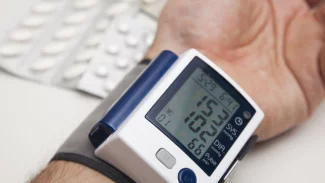readom
NAME
readom - read or write data Compact Discs
SYNOPSIS
readom
I dev= device
[
options
]
DESCRIPTION
Readom
is used to read or write Compact Discs.
The
device
refers to a device location similar to the one used in the wodim command. Refer to its manpage for details.
Also note that this version of readom uses a modified libusal library which has
a different behaviour compared to the one distributed by its original author.
OPTIONS
If no options except the
dev=
option have been specified,
readom
goes into interactive mode.
Select a primary function and then follow the instructions.
-version
Print version information and exit.
I dev= target
Sets the SCSI target for the drive, see notes above.
A typical device specification is
I dev= 6,0
.
If a filename must be provided together with the numerical target
specification, the filename is implementation specific.
The correct filename in this case can be found in the system specific
manuals of the target operating system.
On a
FreeBSD
system without
CAM
support, you need to use the control device (e.g.
R /dev/rcd0.ctl ).
A correct device specification in this case may be
I dev= /dev/rcd0.ctl:@
.
On Linux, drives connected to a parallel port adapter are mapped
to a virtual SCSI bus. Different adapters are mapped to different
targets on this virtual SCSI bus.
If no
dev
option is present,
readom
will try to get the device from the
CDR_DEVICE
environment.
If the argument to the
dev=
option does not contain the characters ',', '/', '@' or ':',
it is interpreted as an label name that may be found in the file
/etc/wodim.conf (see FILES section).
I timeout= #
Set the default SCSI command timeout value to
R # seconds.
The default SCSI command timeout is the minimum timeout used for sending
SCSI commands.
If a SCSI command fails due to a timeout, you may try to raise the
default SCSI command timeout above the timeout value of the failed command.
If the command runs correctly with a raised command timeout,
please report the better timeout value and the corresponding command to
the author of the program.
If no
timeout
option is present, a default timeout of 40 seconds is used.
I debug= #, -d
Set the misc debug value to # (with debug=#) or increment
the misc debug level by one (with -d). If you specify
-dd,
this equals to
I debug= 2.
This may help to find problems while opening a driver for libusal.
as well as with sector sizes and sector types.
Using
-debug
slows down the process and may be the reason for a buffer underrun.
R kdebug= #, kd= #
Tell the
R usal -driver
to modify the kernel debug value while SCSI commands are running.
R -silent , -s
Do not print out a status report for failed SCSI commands.
-v
Increment the level of general verbosity by one.
This is used e.g. to display the progress of the process.
-V
Increment the verbose level with respect of SCSI command transport by one.
This helps to debug problems
during the process, that occur in the CD-Recorder.
If you get incomprehensible error messages you should use this flag
to get more detailed output.
-VV
will show data buffer content in addition.
Using
-V
or
-VV
slows down the process.
I f= file
Specify the filename where the output should be written or the inout should
be taken from. Using '-' as filename will cause
readom
to use
R stdout resp. stdin .
-w
Switch to write mode. If this option is not present,
readom
reads from the specified device.
-c2scan
Scans the whole CD or the range specified by the
I sectors= range
for C2 errors. C2 errors are errors that are uncorrectable after the second
stage of the 24/28 + 28/32 Reed Solomon correction system at audio level
(2352 bytes sector size). If an audio CD has C2 errors, interpolation is needed
to hide the errors. If a data CD has C2 errors, these errors are in most
cases corrected by the ECC/EDC code that makes 2352 bytes out of 2048 data
bytes. The ECC/EDC code should be able to correct about 100 C2 error bytes
per sector.
If you find C2 errors you may want to reduce the speed using the
speed=
option as C2 errors may be a result of dynamic unbalance on the medium.
-scanbus
Scan all SCSI devices on all SCSI busses and print the inquiry
strings. This option may be used to find SCSI address of the
devices on a system.
The numbers printed out as labels are computed by:
bus * 100 + target
I sectors= range
Specify a sector range that should be read.
The range is specified by the starting sector number, a minus sign and the
ending sector number.
The end sector is not included in the list, so
R sectors= 0-0
will not read anything and may be used to check for a CD in the drive.
R speed= #
Set the speed factor of the read or write process to #.
# is an integer, representing a multiple of the audio speed.
This is about 150 KB/s for CD-ROM and about 172 KB/s for CD-Audio.
If no
speed
option is present,
readom
will use maximum speed.
Only MMC compliant drives will benefit from this option.
The speed of non MMC drives is not changed.
Using a lower speed may increase the readability of a CD or DVD.
R ts= #
Set the maximum transfer size for a single SCSI command to #.
The syntax for the
ts=
option is the same as for wodim fs=# or sdd bs=#.
If no
ts=
option has been specified,
readom
defaults to a transfer size of 256 kB. If libusal gets lower values from the
operating system, the value is reduced to the maximum value that is possible
with the current operating system.
Sometimes, it may help to further reduce the transfer size or to enhance it,
but note that it may take a long time to find a better value by experimenting
with the
ts=
option.
-notrunc
Do not truncate the output file when opening it.
-fulltoc
Retrieve a full TOC from the current disk and print it in hex.
-clone
Do a clone read. Read the CD with all sub-channel data and a full TOC.
The full TOC data will be put into a file with similar name as with the
f=
option but the suffix
.toc
added.
-noerror
Do not abort if the high level error checking in
readom
found an uncorrectable error in the data stream.
-nocorr
Switch the drive into a mode where it ignores read errors in data sectors that
are a result of uncorrectable ECC/EDC errors before reading.
If
readom
completes, the error recovery mode of the drive is switched back to the remembered
old mode.
I retries= #
Set the retry count for high level retries in
readom
to
R # .
The default is to do 128 retries which may be too much if you like to read a CD
with many unreadable sectors.
-overhead
Meter the SCSI command overhead time.
This is done by executing several commands 1000 times and printing the
total time used. If you divide the displayed times by 1000, you get
the average overhead time for a single command.
R meshpoints= #
Print read-speed at # locations.
The purpose of this option is to create a list of read speed values suitable
for e.g.
R gnuplot .
The speed values are calculated assuming that 1000 bytes are one kilobyte
as documented in the SCSI standard.
The ouput data created for this purpose is written to
R stdout .
-factor
Output the speed values for
R meshpoints= #
as factor based on
single speed
of the current medium.
This only works if
readom
is able to determine the current medium type.
EXAMPLES
For all examples below, it will be assumed that the drive is
connected to the primary SCSI bus of the machine. The SCSI target id is
set to 2.
To read the complete media from a CD-ROM writing the data to the file
R cdimage.raw :
readom dev=2,0 f=cdimage.raw
To read sectors from range 150 ... 10000 from a CD-ROM writing the data to the file
R cdimage.raw :
readom dev=2,0 sectors=150-10000 f=cdimage.raw
To write the data from the file
cdimage.raw
(e.g. a filesystem image from
R genisoimage )
to a DVD-RAM, call:
readom dev=2,0 -w f=cdimage.raw
ENVIRONMENT
RSH
If the
RSH
environment is present, the remote connection will not be created via
rcmd(3)
but by calling the program pointed to by
R RSH .
Use e.g.
R RSH= /usr/bin/ssh
to create a secure shell connection.
Note that this forces
wodim
to create a pipe to the
rsh(1)
program and disallows
wodim
to directly access the network socket to the remote server.
This makes it impossible to set up performance parameters and slows down
the connection compared to a
root
initiated
rcmd(3)
connection.
RSCSI
If the
RSCSI
environment is present, the remote SCSI server will not be the program
/opt/schily/sbin/rscsi
but the program pointed to by
R RSCSI .
Note that the remote SCSI server program name will be ignored if you log in
using an account that has been created with a remote SCSI server program as
login shell.
SEE ALSO
NOTES
Unless you want to risk getting problems,
readom
should be run as root. If you don't want to allow users to become root on your system,
readom
may safely be installed suid root.
For more information see the additional notes of your system/program
distribution or README.suidroot which is part of the Cdrkit source.
Documentation of the
wodim
program contains more technical details which could also apply to
readom.
DIAGNOSTICS
A typical error message for a SCSI command looks like:
readom: I/O error. test unit ready: scsi sendcmd: no error CDB: 00 20 00 00 00 00 status: 0x2 (CHECK CONDITION) Sense Bytes: 70 00 05 00 00 00 00 0A 00 00 00 00 25 00 00 00 00 00 Sense Key: 0x5 Illegal Request, Segment 0 Sense Code: 0x25 Qual 0x00 (logical unit not supported) Fru 0x0 Sense flags: Blk 0 (not valid) cmd finished after 0.002s timeout 40sThe first line gives information about the transport of the command. The text after the first colon gives the error text for the system call from the view of the kernel. It usually is: I/O error unless other problems happen. The next words contain a short description for the SCSI command that fails. The rest of the line tells you if there were any problems for the transport of the command over the SCSI bus. fatal error means that it was not possible to transport the command (i.e. no device present at the requested SCSI address).
The second line prints the SCSI command descriptor block for the failed command.
The third line gives information on the SCSI status code returned by the
command, if the transport of the command succeeds.
This is error information from the SCSI device.
The fourth line is a hex dump of the auto request sense information for the
command.
The fifth line is the error text for the sense key if available, followed
by the segment number that is only valid if the command was a
copy
command. If the error message is not directly related to the current command,
the text
deferred error
is appended.
The sixth line is the error text for the sense code and the sense qualifier if available.
If the type of the device is known, the sense data is decoded from tables
in
R scsierrs.c .
The text is followed by the error value for a field replaceable unit.
The seventh line prints the block number that is related to the failed command
and text for several error flags. The block number may not be valid.
The eight line reports the timeout set up for this command and the time
that the command really needed to complete.
BUGS
The
readom
program described here is the Cdrkit spinoff from the original
readcd
application (see AUTHOR section for details). It may contain bugs not present
in the original implementation.
It is definitely less portable than the original implementation.
For platform specific bugs, see the corresponding README.platform file in the
Cdrkit documentation (eg. README.linux).
MAILING LISTS
If you want to actively take part on the development of readom,
you may join the developer mailing list via this URL:
http://alioth.debian.org/mail/?group_id=31006
The mail address of the list is:
debburn-devel@lists.alioth.debian.org
AUTHOR
J\*org Schilling Seestr. 110 D-13353 Berlin Germany
This is application is a spinoff from the original implementation of readcd delivered in
the cdrtools package [1] created by Joerg Schilling, who deserves the most credits
for its success. However, he is not involved into the development
of this spinoff and therefore he shall not be made responsible for any problem
caused by it. Do not try to get support from the original author!
Additional information can be found on:
https://alioth.debian.org/projects/debburn/
https://alioth.debian.org/projects/debburn/
If you have support questions, send them to
debburn-devel@lists.alioth.debian.org
If you have definitely found a bug, send a mail to this list or to
submit@bugs.debian.org
writing at least a short description into the Subject and "Package: cdrkit"
into the first line of the mail body.
SOURCES
[1] Cdrtools 2.01.01a08 from May 2006, http://cdrecord.berlios.de



















